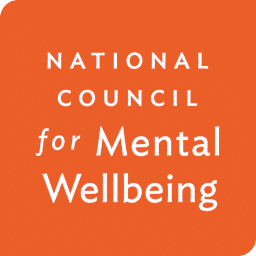Have you ever felt overwhelmed by life’s challenges and struggled to find the light at the end of the tunnel? You are not alone. Suicidal ideation, or thoughts of self-harm and suicide, affects millions of people worldwide. By understanding the symptoms, causes, and available treatments, we can work together to prevent these tragic outcomes and support those who need it most.
In this blog post, we will look at the complexities of suicidal ideation and provide insight for those facing a mental health challenge or suicide risk. By recognizing warning signs and symptoms, understanding suicide risk, and learning about any underlying psychiatric disorder, we can make a difference and help save lives.
Short Summary
- Understanding suicidal ideation is key to providing support & intervention.
- Recognizing the warning signs before a suicide attempt can help you provide timely assistance.
- Utilize mental health services, suicide prevention programs & crisis resources for early intervention and prevention.
Understanding Suicidal Ideation

Suicidal ideation refers to thoughts of self-harm or how to attempt suicide. The immediate risk of these thoughts can lead to an attempted suicide if not addressed and treated properly. This internal struggle can affect people from all walks of life, regardless of age, gender, or socioeconomic status. In fact, According to the Substance Abuse and Mental Health Services Administration, the 2017 National Survey on Drug Use and Health found that 4.3% of US adults ages 18 and up experienced suicidal ideation, and some of them might have attempted suicide. Substance abuse or substance use problems often accompanies men, women, and young adults feeling suicidal.
Similarly anxiety disorders and psychiatric disorders, such as post traumatic stress disorder, borderline personality disorder, major depression, and bipolar disorder, can accompany severe suicidal ideation.
There are two primary types of suicidal thoughts: active and passive. While both are serious and require attention, it is important to understand the differences between them in order to provide the appropriate support and intervention.
Active Suicidal Ideation
Active suicidal ideation occurs when someone has thoughts of suicide and is actively planning or thinking about ways to do it. This type of ideation is serious and needs urgent attention and help. Signs of active suicidal thoughts may include:
- Talking about death or suicide
- Expressing feelings of hopelessness or worthlessness
- Giving away possessions
- Making a will
- Researching methods of suicide
If you or someone you know is talking about feeling suicidal or has a suicide plan, they are experiencing active suicidal ideation or could be ready to attempt suicide. Seek help immediately.
Early intervention and treatment are crucial in preventing these thoughts from escalating into suicide attempts.
Passive Suicidal Ideation
Passive suicide ideation, on the other hand, involves frequent thoughts about death and suicide but without suicidal intent, planning or taking any steps to hurt oneself. While less imminent in terms of increased risk, passive suicidal ideation still warrants attention and support, as it can be an indicator of an underlying mental disorder or other mental health challenges that have never be addressed.
Symptoms of passive suicidal ideation can include:
- Feeling hopeless
- Feeling like a burden to others
- Feeling disconnected from the world
- Having a preoccupation with death
Similar to active suicidal ideation, life events and trauma, can all contribute to passive suicidal ideation. Childhood abuse, sexual abuse, and physical abuse can have lasting effects. A traumatic brain injury from a car wreck, sports or even family violence can cause mental illness and a person may be unaware of its existence until examining this type of suicidal ideation.
Recognizing Symptoms

Recognizing the symptoms of suicidal ideation is vital in providing timely support and intervention for individuals in need. Symptoms can manifest in various ways, including behavioral and emotional changes. Being aware of these warning signs can help friends, family members, and professionals intervene and potentially save a life.
It’s important to remember that symptoms can vary from person to person, and not everyone will exhibit the same warning signs or behaviors. By understanding the different types of symptoms, we can better identify when someone may be experiencing suicidal ideation and offer appropriate help.
Behavioral Symptoms
Behavioral symptoms of suicidal ideation can be subtle and may not always be obvious. Some common signs include:
- Expressing feelings of hopelessness, worthlessness, or feeling like a burden
- Withdrawing from social activities
- Engaging in risky or self-destructive behaviors, which may indicate suicidal behavior
- Giving away possessions
- Talking or writing about death, dying, or suicide
It is important to be aware of these signs and seek help if you or someone you know is experiencing them.
In young adults, these symptoms may manifest as withdrawal, changes in daily routine, or increased substance use. It is crucial to be vigilant in recognizing these changes in behavior. Increased risk nonfatal self harm, such as cutting or self mutilation, can be a precursor to planning suicide.
Emotional Symptoms
Emotional symptoms of suicidal ideation can include:
- Persistent feelings of hopelessness
- Sadness
- Despair
- Worthlessness
- Guilt
- Emotional numbness
These symptoms can often be mistaken for typical mood fluctuations or temporary sadness, but they can be indicative of suicidal ideation.
These emotions can be overwhelming and difficult to manage, making it essential for individuals experiencing these symptoms to seek help from professionals, friends, or family members.
Risk Factors and Causes
Suicidal ideation is a complex issue with many potential risk factors and causes. It is important to identify and evaluate these factors when assessing the issue. Understanding these factors can help us identify those who may be at increased risk and provide appropriate support and intervention.
It is crucial to remember that increased risk does not guarantee that someone will experience suicidal ideation, plan a suicide attempt or commit suicide. They serve as potential indicators that may help us recognize individuals who may be at greater suicide risk and in need of support.
Psychiatric Disorders
Psychiatric disorders or mental disorders, such as:
- Major Depression
- Bipolar Disorder
- Post Traumatic Stress Disorder
- Anxiety Disorders
The above are some examples of mental disorders with behaviors that can contribute to an individual planning suicide or attempting to complete suicide. Therapeutic intervention can play a significant role in teaching individuals suffering from depression new ways to address and overcome suicidal thoughts.
Life Events and Trauma
Life events and trauma can also trigger suicidal ideation. Factors such as:
- Relationship issues
- Traumatic events
- Substance abuse
- Crises
- Work pressures
- Physical health problems, such as chronic pain
- Financial difficulties
Recognizing the impact that life events and trauma can have on suicidal ideation can help us support those who may be struggling and encourage them to seek help, if needed.
Family History
The history of a suicide death in a family can also play a role in increasing the risk of suicidal ideation. Individuals with a family history of psychiatric disorders, such as mood disorders and other mental illnesses, may be more likely to experience thoughts of suicide.
Understanding the influence of family history can help us provide targeted support and intervention for those who may be at greater risk.
Diagnosis and Assessment
Diagnosing and assessing suicidal ideation is a critical step in providing appropriate support and treatment. This process typically involves clinical interviews and medical exams or psychometric tests to understand the individual’s symptoms and history.
By accurately diagnosing and assessing suicidal ideation, mental health professionals can:
- Develop an effective treatment plan tailored to the individual’s specific needs
- Provide early diagnosis and interventions, focused on significantly reducing the risk of suicide
- Promote recovery
Clinical Interviews
Clinical interviews are conducted by licensed professionals to gain an understanding of an individual’s issues related to suicidal ideation. These interviews typically involve asking a series of questions known as a suicide risk assessment to:
- Determine if an individual has suicidal thoughts
- Assess any risk factors
- Learn about any previous suicide attempts
- Examine protective factors
- Decide on the best course of treatment and intervention.
Structured interviews can provide valuable insights into an individual’s experiences and help licensed professionals make accurate diagnoses and develop effective treatment plans. By fostering open and honest communication, clinical interviews can serve as a crucial step in addressing and managing any mental health disorder.
Medical Exams and Psychometric Tests
Medical exams and psychometric tests can help identify underlying mental health conditions and assess the severity of suicidal thoughts. While there are no specific medical exams for diagnosing suicidal ideation, a thorough evaluation by a doctor or licensed professional can help determine the most appropriate course of action.
Psychometric tests, self-report questionnaires, structured interviews, and psychological tests, can measure the intensity of suicidal thoughts and provide valuable information for developing a targeted treatment plan. By utilizing these tools, mental health professionals can better understand the individual’s needs and offer the appropriate support and intervention.
A suicidal ideation scale such as the Beck Scale for Suicide Ideation (BSSI), Columbia Suicide Severity Rating Scale (C-SSRS), or the Suicide Assessment Five-Step Evaluation (SAFE-T) are all methods used to determine the severity of a possible attempted suicide.
Treatment Options
There are several treatment options available for individuals experiencing suicidal ideation. Depending on the individual’s specific needs and circumstances, treatment may involve psychotherapy, medication, and/or hospitalization. By exploring various treatment options, individuals can find the most suitable approach to manage their suicidal thoughts and work towards recovery.
Psychotherapy
Psychotherapy is a form of treatment that helps individuals understand their emotions and develop coping strategies to manage suicidal thoughts. Some common types of psychotherapy used to treat suicidal ideation include:
- Cognitive Therapy for Suicide Prevention (CT-SP)
- Dialectical Behavior Therapy (DBT)
- Psychodynamic psychotherapy
- Collaborative Assessment and Management of Suicidality (CAMS)
- Cognitive Behavioral Therapy (CBT)
By addressing the root causes of suicidal thoughts and teaching individuals how to manage their emotions and cope with difficult situations, psychotherapy can be an effective means of reducing suicidal ideation and promoting overall mental health and well-being.
Medication
Medication can play an important role in treating some mental health disorders that may contribute to suicidal thoughts. However, some medications may increase suicidal thoughts in certain individuals, highlighting the need for careful monitoring and professional guidance.
While medication alone may not be a comprehensive solution for suicidal ideation, it can be an effective tool when used in conjunction with other treatment approaches, such as psychotherapy.
Hospitalization
Hospitalization can provide a safe and monitored environment for individuals at high risk of attempting suicide. During hospitalization, individuals receive medical and psychological care and are closely monitored by healthcare professionals to ensure their safety and well-being.
Coping Strategies
Implementing coping strategies can be an effective way to manage suicidal thoughts and promote overall well-being. By focusing on personal and professional interests, engaging activities that are fulfilling and performing work that provides a sense of purpose, individuals can better cope with their emotions and thoughts.
In addition to seeking professional help, there are several self-help strategies that can be beneficial in managing suicidal ideation. Building a support network, practicing self-care, and utilizing crisis resources can all play a vital role in preventing suicidal thoughts from escalating.
Building a Support Network
Building a support network is an essential component of coping with suicidal thoughts. This network can include:
- Family
- Friends
- Mental health professionals
- Support groups
All of whom can provide different types of support and understanding. By reaching out to others and being open about one’s needs and feelings, individuals can develop a strong support network that fosters a sense of belonging and understanding.
Self-Care Tips
Self-care is an important aspect of managing one’s well-being, particularly for individuals experiencing suicidal ideation. By maintaining a healthy lifestyle, engaging in relaxing activities, and seeking professional help when needed, individuals can better manage their emotions and thoughts.
Some self-care tips include:
- Eating a balanced diet
- Exercising regularly
- Getting enough sleep
- Avoiding harmful habits, such as smoking and excessive alcohol consumption
By prioritizing self-care, individuals can reduce their risk of experiencing suicidal thoughts.
Crisis Resources
During times of distress, crisis resources can provide immediate assistance and support for individuals experiencing suicidal ideation. These resources can include helplines, support groups, and online resources that offer emotional support, direction, and resources to help manage distress.
Some examples of crisis resources include the Lifeline’s national network of local crisis centers, the 988 Suicide and Crisis Lifeline, and 24/7 Crisis Hotlines. By utilizing these resources, individuals can receive the support they need during difficult times and work towards recovery.
In Northern New Jersey, Care Plus has a 24/7 hotline for children and young adults up to age 21 that are in crisis and a 24/7 psychiatric emergency helpline. Both numbers are at the top of this web page.
CarePlus New Jersey – Mental Health Services
CarePlus New Jersey offers access to mental health services in Northern New Jersey. It is essential for individuals experiencing suicidal ideation to receive timely treatment and support. These services can include:
- Crisis counseling
- Referrals
- Advocacy
- Information
- Outreach
- Support
The Substance Abuse and Mental Health Services Administration offers tips and guides for professionals who work with dually diagnosed individuals. Substance misuse and mental health challenges are addressed daily in our clinics. Our services help individuals manage their mental health issues and include in-person counseling, tele-health sessions, and crisis hotlines. By accessing these services, individuals can receive the help they need to manage their suicidal thoughts and promote overall mental health.
Suicide Prevention Programs
Suicide prevention programs play a vital role in raising awareness, providing education, and promoting early intervention for individuals experiencing suicidal ideation. These programs can help reduce the risk of suicide attempts and promote long-term recovery and wellness.
CarePlus New Jersey partners with local police and schools to present suicide prevention programs. Community members, law enforcement, and CarePlus staff work together to prevent suicide and create suicide prevention support those who need it most.
Summary
In conclusion, understanding suicidal ideation is crucial for providing support, intervention, and treatment to those in need. By recognizing the symptoms, identifying risk factors and causes, exploring treatment options, and implementing coping strategies, we can make a significant difference in the lives of individuals experiencing suicidal thoughts.
As we strive to create a world where everyone feels supported and understood, let us remember the importance of prevention, early intervention, and compassion. Together, we can help save lives and promote mental health and well-being for all.
Frequently Asked Questions
What is the difference between active and passive suicidal ideation?
Active suicidal ideation involves having a plan to end one’s life, while passive suicidal ideation is having thoughts of death or wishing to die without a concrete plan.
How can I recognize the symptoms of suicidal ideation in myself or a loved one?
Pay attention to behavioral and emotional symptoms such as withdrawal, changes in routine, increased substance use, hopelessness, despair and overwhelming sadness – these can be signs of suicidal ideation in yourself or a loved one.
It is important to be aware of these signs and to take action if you or someone you know is exhibiting them. Seek help from a mental health professional or call a suicide hotline if you are concerned about yourself or someone else.
What are some common risk factors and causes of suicidal ideation?
Mental health disorders, life events and trauma, and family history are all common risk factors for suicidal ideation.
How can I build a support network to help me cope with suicidal thoughts?
Reach out to loved ones, mental health professionals, and support groups for help with your suicidal thoughts. Be open and honest about your needs and feelings to get the best possible support.
Sources:
https://www.samhsa.gov/data/release/2017-national-survey-drug-use-and-health-nsduh-releases
https://www.samhsa.gov/data/sites/default/files/cbhsq-reports/NSDUHFFR2017/NSDUHFFR2017.pdf
https://www.columbiapsychiatry.org/news/simple-set-6-questions-screen-suicide
https://en.wikipedia.org/wiki/Suicidal_ideation
https://www.mayoclinic.org/diseases-conditions/suicide/symptoms-causes/syc-20378048
cdc.gov/suicide/facts/index.html

Lorelle Holway, MSW, LCSW is the Vice President of Hospital and Community Services at CarePlus New Jersey.
During the past 17 years, Lorelle performed in a variety of roles, including Case Manager, Certified Mental Health Screener, Clinician, Clinical Manager, and Program Manager/Director. She possesses a clinical social work license to practice in NJ and is a certified SIFI Instructor and Clinical Supervisor. Lorelle has been providing therapy to individuals and families, with a focus on crisis and couples counseling. In addition, Lorelle has provided mentorship and supervision to many clinicians throughout her tenure, and has played a key role in developing and facilitating trainings on various mental health topics, to both internal staff and community members.









